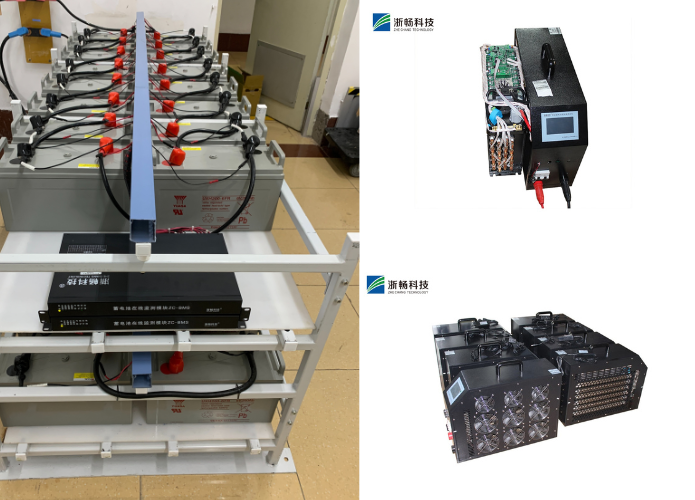What is the Difference Between a Battery Tester and a Battery Load Tester?
When it comes to maintaining batteries, whether for cars, boats, or household gadgets, the tools you use for testing are crucial. Two common tools in this regard are the battery tester and the battery load tester. Although these tools might seem similar, they serve different purposes and provide distinct types of information about the battery’s condition. Understanding the differences between a battery tester and a battery load tester can help you make informed decisions when diagnosing battery health, ultimately saving time, money, and frustration.
This blog will dive into the details of each tool, explain how they work, and explore their specific uses and benefits. Additionally, we'll address common questions and provide tips for choosing the right tool for your needs.
What is Battery Testing?
In today's world, batteries are integral to the functioning of a wide variety of devices, from electric vehicles and smartphones to household electronics like remote controls and smoke detectors. However, batteries degrade over time, gradually losing their ability to hold a charge, which can result in performance issues or sudden device failures. To prevent the inconvenience of unexpected battery problems, routine battery testing is crucial. Regular testing helps monitor a battery's condition and extend its lifespan. Two common tools for this are battery testers, which measure charge levels, and battery load testers, which assess performance under stress.
Why Battery Testing is Important
Battery testing plays a vital role in ensuring the reliability and longevity of your devices. By regularly monitoring the health of your batteries, you can detect early signs of wear or deterioration, allowing you to take preventive action before a complete failure occurs. Whether it's a car battery powering your vehicle or a smaller 6v battery used in specialized equipment, knowing the condition of these power sources helps to avoid unexpected breakdowns, which can cause significant inconveniences or downtime. Regular testing also allows for better planning, such as knowing when to recharge or replace a battery, preventing sudden malfunctions.
Additionally, testing helps extend the lifespan of batteries by providing insights into their performance and potential issues. For instance, identifying a drop in voltage or capacity through testing can indicate the need for maintenance or reconditioning, potentially prolonging the battery's useful life. This is particularly important for expensive or critical devices, where battery failure can result in costly repairs or interruptions. With proper testing and maintenance, you not only ensure consistent performance but also reduce the environmental impact by minimizing premature battery disposal and contributing to a more sustainable usage cycle.
What is a Battery Tester?
A battery tester is an essential tool for assessing the voltage output of a battery, allowing users to determine its current state of charge. Whether it's a household battery or a larger car battery, battery testers offer a quick and easy way to gauge how much power remains, helping to prevent battery failure at inconvenient times.
These devices are typically user-friendly and require minimal setup, making them accessible for both professionals and everyday consumers. By simply connecting the tester to a battery’s terminals, it can instantly provide information on whether the battery is fully charged, partially discharged, or completely drained.
How a Battery Tester Works
Battery testers operate by measuring the voltage across the battery's terminals. When connected, the tester reads the voltage and interprets it as a representation of the battery's charge level.
A higher voltage indicates a fuller charge, while a lower voltage suggests that the battery is nearing depletion. Most battery testers are versatile enough to handle a variety of battery types and sizes, ranging from 12v automotive batteries to smaller batteries used in household electronics.
Types of Battery Testers
* Digital Battery Testers: These testers offer a precise digital readout of the battery’s voltage, making it easy to determine the exact charge level at a glance.
* Analog Battery Testers: These testers feature a needle-and-dial mechanism to display the battery’s charge level. Although less precise than digital models, they remain popular due to their simplicity and durability.
What is a Battery Load Tester?
A battery load tester, also known as a battery load drop tester or battery load checker, offers a more comprehensive evaluation of a battery's performance compared to a basic battery tester. While a standard battery tester primarily measures voltage to gauge a battery’s state of charge, a battery load checker goes a step further by applying a simulated load to the battery. This process tests the battery’s ability to deliver current under conditions that mimic actual usage scenarios. By doing so, it provides a more accurate assessment of the battery's health and performance capabilities. This is especially valuable for identifying issues that might not be apparent through voltage readings alone, such as a battery's capacity to sustain power over time.
The advanced nature of a battery load checker makes it particularly useful in real-world applications where a battery must perform reliably under various demands. For instance, in automotive settings, a load tester can reveal whether a car battery can handle the high current required for engine start-ups, which is critical for preventing unexpected failures. Similarly, for other types of batteries used in equipment and devices, this testing ensures that they are not only charged but also capable of delivering consistent and reliable power when needed. This thorough evaluation helps in making informed decisions about battery maintenance or replacement, ultimately contributing to the smooth operation of critical systems.
How a Battery Load Tester Works
Battery load checkers are designed to replicate the real-world conditions under which a battery operates by applying a controlled load, usually measured in amperes, to the battery. This simulation is crucial because it allows for the assessment of the battery’s performance under stress, which mirrors the demands placed on it during actual use. When a load is applied, the tester measures how the battery's voltage responds to this demand. A healthy battery will exhibit only a slight drop in voltage, demonstrating its ability to handle the load effectively and maintain adequate power output. This minimal voltage drop is indicative of a battery that is still in good condition and capable of delivering reliable performance.
Conversely, a significant voltage drop under load is a clear sign of a failing battery. This substantial decrease indicates that the battery is struggling to sustain the required current, which can lead to performance issues and potential failures in the devices or systems relying on it. By providing this critical insight into a battery’s ability to handle real-world demands, load testers help identify weak or failing batteries before they cause problems. This proactive approach enables users to address battery issues promptly, ensuring continued reliability and avoiding unexpected interruptions in critical applications.
Types of Battery Load Testers
* Manual Load Testers: These require the user to manually apply a load to the battery and observe the voltage drop.
* Digital Load Testers: These automate the process, providing a digital readout of the results, including voltage drop and overall battery health.
Key Differences Between Battery Testers and Battery Load Testers
a) Purpose
Battery Tester: Primarily measures the state of charge by checking the voltage.
Battery Load Tester: Measures the battery's ability to perform under load, which is a more comprehensive test of its health.
b) Information Provided
Battery Tester: Provides a quick snapshot of the battery's current charge level.
Battery Load Tester: Provides a deeper analysis, including how the battery performs under real-world conditions, which can help predict its remaining lifespan.
c) Use Cases
Battery Tester: Ideal for quick checks to see if a battery needs recharging or replacing.
Battery Load Tester: Best for in-depth analysis, especially when assessing whether a battery can still deliver sufficient power for its intended use.
d) Complexity and Cost
Battery Tester: Typically simpler and more affordable, making it accessible for casual users.
Battery Load Tester: More complex and generally more expensive, but offers more detailed and valuable insights for those who need them.
Applications of Battery Testers and Load Testers
Different situations call for different testing tools. Understanding when to use a battery tester versus a battery load tester can help ensure you're using the right tool for the job.
a) Automotive Applications
In the automotive world, battery health is critical. A car’s battery needs to be in good condition to start the engine reliably. A battery tester is useful for quick checks of a car battery’s charge, while a battery load tester is better for assessing whether the battery can handle the demands of starting the engine and running accessories.
b) Marine and RV Applications
Batteries used in boats and RVs often face challenging conditions and need to provide power for extended periods. A battery load checker is essential in these cases to ensure that the battery can perform under load, such as when running lights, appliances, and other equipment.
c) Household Batteries
For household batteries, such as those used in remotes or small electronics, a basic battery tester is usually sufficient to check if the battery is charged. However, for larger batteries or those used in critical devices, a battery load tester can provide a more accurate assessment of battery life.
d) Industrial Applications
In industrial settings, where batteries power machinery and backup systems, a battery load drop tester is crucial for ensuring that the batteries can handle the high demands placed on them. This type of testing can prevent unexpected failures in critical systems.
Advantages of Using a Battery Tester
Battery testers are popular tools due to their simplicity and effectiveness in providing rapid insights into a battery's state of charge.
Ease of Use
Battery testers are designed with user-friendliness in mind. They typically involve a straightforward process: connect the tester to the battery terminals, and it provides an immediate reading of the battery's charge level. This simplicity makes them particularly valuable for quick assessments and for individuals who may not have extensive technical knowledge or experience with more complex diagnostic equipment.
Portability
Another advantage of battery testers is their compact and portable design. Most models are small and lightweight, allowing users to easily carry them between different locations, whether at home, in the garage, or while traveling. This portability ensures that you can perform battery checks whenever necessary, adding convenience to routine maintenance tasks.
Cost-Effective
Battery testers are also cost-effective. They are generally affordable, making them a practical investment for anyone who frequently needs to monitor battery charge levels. Their low cost relative to their utility ensures that users can maintain battery health without incurring significant expenses.
Advantages of Using a Battery Load Tester
While battery load checkers such as 6v battery load testers are more complex than basic testers, they offer substantial advantages for those seeking a detailed evaluation of battery health.
Comprehensive Analysis
Battery load testers are designed to provide an in-depth assessment of a battery's performance under simulated real-world conditions. By applying a specific load and measuring the battery's response, these testers can reveal how well the battery can handle stress and demand. This thorough analysis helps predict potential battery failures and determine whether a battery is nearing the end of its useful life, allowing for proactive replacements and minimizing the risk of unexpected breakdowns.
Accurate Diagnosis
The key benefit of battery load testers lies in their ability to deliver a more accurate diagnosis of battery health. Unlike simple voltage testers that only measure the static voltage level, load testers simulate operational conditions, giving a clearer picture of how a battery performs under actual usage scenarios. This approach provides a more precise evaluation of a battery's capability to sustain power over time, making it easier to identify issues that might not be apparent from voltage readings alone.
Preventive Maintenance
Incorporating a battery load tester into a regular maintenance routine can significantly enhance preventive measures. By routinely testing batteries under load, users can detect potential problems early and address them before they lead to failures. This is particularly crucial for critical systems, such as automotive or industrial applications, where unexpected battery failures can result in costly downtime or operational disruptions. Regular testing with a load tester ensures batteries are reliable and perform optimally, thereby safeguarding against sudden malfunctions.
Choosing the Right Battery Tester or Load Tester
For General Use
If your primary need is to check the charge level of household batteries or occasionally test a car battery, a basic battery tester is generally sufficient. These testers are designed for ease of use and provide quick readings of the battery’s voltage. They are ideal for everyday applications where precise performance metrics are less critical, such as monitoring the charge level of AA or AAA batteries or performing occasional checks on a car battery to ensure it's not completely dead.
For Automotive or Marine Use
When dealing with automotive, boat, or RV batteries, where the ability to handle load is crucial, a battery load checker or load tester is a more appropriate choice. These testers simulate the conditions under which the battery will operate, providing a comprehensive view of the battery’s health under stress. This is especially important for batteries used in starting engines or powering accessories, as they need to perform reliably under demanding conditions. A load tester will help ensure that the battery can handle these requirements and alert you to potential issues before they result in failures.
For Industrial or Heavy-Duty Applications
In industrial settings or other high-demand environments, where battery performance must be precise and reliable, a battery load drop tester is essential. These environments often involve high power requirements and continuous operation, making the detailed analysis provided by a load tester invaluable. Such testers help ensure that batteries can meet the rigorous demands of industrial machinery or heavy-duty equipment, preventing unexpected downtime and maintaining operational efficiency.
Considering Battery Types
It is also important to consider the specific types of batteries you are working with. Some testers are designed for particular battery types, such as 6v battery load testers for smaller batteries or specialized testers for deep-cycle batteries used in renewable energy systems or recreational vehicles. Choosing a tester compatible with the battery type you are working with ensures accurate readings and effective performance assessments.
Common Mistakes to Avoid When Testing Batteries
Even with the right tools, mistakes can occur during battery testing, leading to inaccurate assessments or potential hazards. Here are some common pitfalls and how to avoid them:
Testing with Dirty Terminals
One of the most common issues is testing a battery with dirty or corroded terminals. Contaminants such as dirt, grease, or corrosion can interfere with the electrical connection between the battery and the tester, leading to skewed or inaccurate readings. To avoid this, always clean the battery terminals thoroughly before performing a test. Use a terminal brush or a mixture of baking soda and water to remove corrosion, and ensure that the terminals are dry and free of debris before connecting the tester.
Ignoring Safety Precautions
Battery testing, particularly when using a load tester, can present safety risks if proper precautions aren’t observed. Batteries, especially lead-acid types, contain corrosive acid and can produce explosive gases. Always wear appropriate protective gear, such as safety goggles and gloves, and work in a well-ventilated area. Ensure that the testing area is free from flammable materials and that you understand the safety instructions for your specific tester to minimize the risk of accidents.
Misinterpreting Results
Another common issue is misinterpreting the results from your battery tester. For example, a low voltage reading doesn’t necessarily mean that the battery is defective; it might simply indicate that the battery needs recharging. To accurately interpret test results, compare them to the battery’s specifications and consider the context, such as the battery's age, usage patterns, and recent performance. Understanding the normal operating range for your battery type will help you make a more informed assessment.
Using the Wrong Tester
Using an incorrect tester for the type of battery or the type of test required can lead to incomplete or misleading results. For example, a basic voltage tester might not provide the comprehensive analysis needed for automotive or marine batteries, where a load tester is more appropriate. Ensure that you choose the right tool based on your specific testing needs and the type of battery you are evaluating. This will ensure that you get an accurate assessment of the battery’s health and performance.
Conclusion
Both battery testers and battery load checkers such as 6v battery load testers are essential tools for maintaining and diagnosing the health of batteries. While a battery tester is great for quickly checking charge levels, a battery load tester offers a more comprehensive analysis by simulating real-world conditions. The choice between these tools depends on your specific needs, the types of batteries you’re working with, and the level of detail you require in your battery assessments.
Regular battery testing, using the right tools, can extend the life of your batteries, prevent unexpected failures, and ensure that your devices and vehicles operate reliably. Whether you’re a DIY enthusiast, a mechanic, or an industrial technician, understanding the difference between a battery tester and a battery load tester will help you make the best decisions for maintaining battery health.
Popular Battery Tester
Popular Battery Tester
Latest News
Latest News


Get Price of Battery Tester
Get Price of Battery Tester
Address:
Floor 3, Building 1, No.1418-60, Moganshan road, Hangzhou city, Zhejiang Province, China.310015


















































